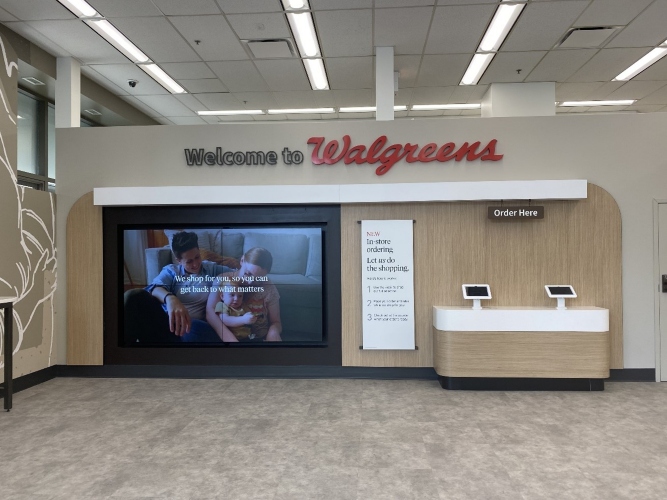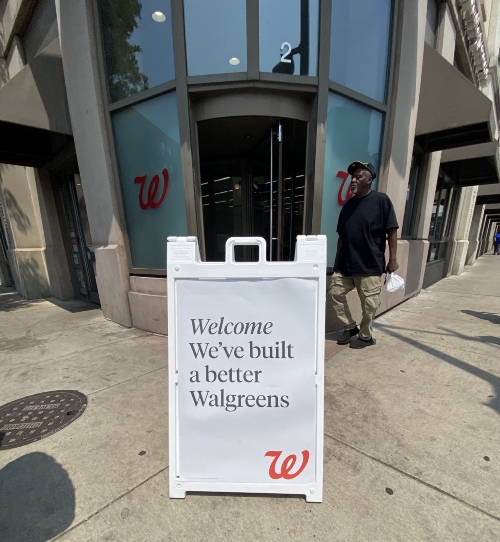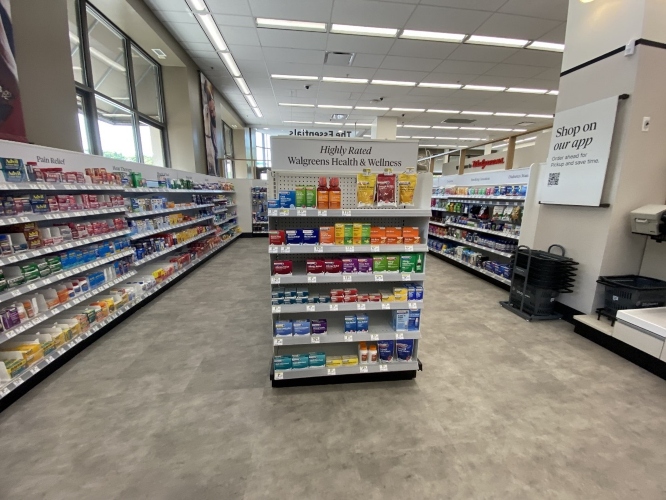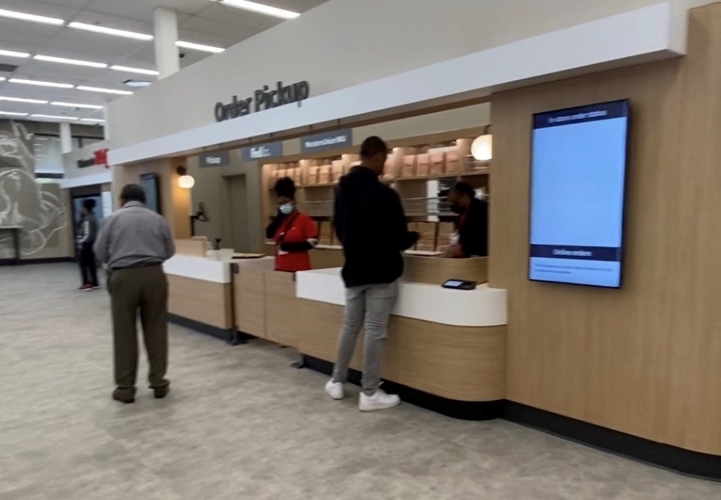Walgreens Responds to Theft Concerns with Controversial New Format
Late last month Walgreens officially opened a remodeled location at 2 East Roosevelt Road in Downtown Chicago’s South Loop neighborhood – the new format, dubbed by various media outlets as an ‘Anti-theft store’, enables customers to pick-up online orders, place in-store kiosk orders, digitally queue for pharmacy services, and self-shop across two aisles of surveilled merchandise. Amidst a recent rise in organized retail crime and inventory shrink, the new Walgreens format undertakes a worthy objective to counteract shoplifting but requires exceptional execution to deliver an excellent customer experience. We include our overview of the new store and areas in need of improvement in the post that follows.
Walgreens’ Latest Pilot Tests Various Changes to Address Retail Theft
The redesigned location occupies a space that was formerly a traditional Walgreens at the corner of Roosevelt Road and South State Street. It is a first-of-its kind format, where customers are greeted with a welcome sign inviting them to “a better Walgreens.” The entire in-store assortment is inaccessible to customers save for just two aisles of convenience-driven essentials that can be shopped independently on low shelves under camera surveillance, providing clear shopper visibility.
The transformed interior is clean, modern, and easy to navigate with greeters and plentiful signage to help demystify the new customer experience. The overarching message is that Walgreens store associates will take the hard work out of shopping while customers are invited to browse the curated self-shop assortment in addition to digital shopping capabilities to access the broader assortment. Basics including select personal care, health and wellness, packaged food, and refrigerated beverages can be purchased on the go with self-check-out technology. Any non-essentials must be purchased online in advance or using one of the store’s touchscreen kiosks.
The remainder of the store space is devoted to online order pick-up, a full-service pharmacy with a digital check-in counter, a photo and passport kiosk, and a backroom of merchandise accessible only to store associates fulfilling online and in-store orders. Electronic signage communicating the status of in-store orders flanks the pick-up counter, which is also used for FedEx and Western Union transactions.
One Walgreens associate touted the store’s design as a nod to the brand’s pharmacy roots, where the pharmacist would fill prescriptions and do the shopping for customers behind the pharmacy counter – an anecdote that obscured the rationale for this set-up today.
McMillanDoolittle Point of View
To drive success with low-touch, convenience-driven concepts like this one, Walgreens must not only address issues related to inventory shrinkage but also maintain a laser focus on creating a seamless customer experience.
- Remove friction from Kiosk-assisted Orders. Painfully slow page loading times on in-store kiosks and incorrect online inventories were key issues that plagued our visit to Walgreens’ newest location. To win customer buy-in for this locked-down concept, a seamless kiosk order experience with correct real-time inventory visibility is a given.
- Maintain in-stock position with curated essentials. Out-of-stock product was another issue we encountered during our Walgreens visit, creating a significant letdown with a pared down assortment across only a handful of categories. To encourage repeat visits with a highly limited assortment, stock-outs must be minimized or eliminated.
- Drive improvements to store dwell time. While store employees cited shorter dwell times for the new store concept, our own visit proved a lengthy affair requiring multiple store associate interactions to fulfill a kiosk-assisted order for merchandise that was incorrectly identified as available. Walgreens must deliver a faster and more convenient customer experience to create a win-win for the customer and the business.
- Create opportunities for consultative service and comparison shopping. Without the ability to investigate products in the selling space of the store, there is a greater need for service engagement as well as comparative digital tools to help customers select from available products. During our visit, a sales associate pulled multiple products and demonstrated a photograph of the extensive backroom inventory to help guide the purchase decision due to unexpected out-of-stock issues. While this was certainly a helpful gesture, it highlighted the customer-facing sacrifices – namely, the inability to physically touch and browse products independently – inherent in this new concept.
- Listen and respond to feedback from the local community. Perhaps most important, retailers like Walgreens must engage closely with the local community when addressing issues involving crime and safety with responsiveness and sensitivity. Current store communication protocols appear to dodge the issue of organized retail crime, leaving customers to arrive at their own (read: uncomfortable) conclusions about the new ways of shopping at Walgreens. Needless to say, this can lead to some unfortunate and unintended results.
Rise in Organized Retail Crime and Inventory Shrink Pose Industry Challenges
Organized retail crime, violence, and theft have become persistent problems that hinder the industry’s ability to support and serve communities. In May, NRF President and CEO Matt Shay cited industry losses associated with inventory shrinkage of $95bn in 2022 and growing. Large national chains such as Target, Home Depot, Best Buy, Ulta, and Walgreens have all voiced concerns about the negative business impact of organized retail crime – including the well-publicized loss of an incremental $500 million of operating profit at Target.
Retailers are increasingly focused on implementing solutions to mitigate this alarming concern and its negative impacts on customers, associates, and the economic health of the communities where they operate stores. We commend Walgreens for testing new technologies, designs, and tactics that may benefit customers, associates, and communities alike. We look forward to seeing what tactics may find their way into additional Walgreens locations in the future.
If you’re a brand or retailer looking to develop a winning concept that removes friction from customer and associate journeys, contact us for a complimentary consultation.




No Comments